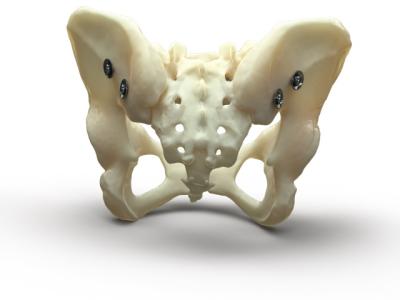Proving once and for all that you can, indeed, teach an old dog new tricks, the University of Utah has earned its first-ever 510(k) clearance from the FDA at the ripe old age of 173.
The regulatory nod was awarded to the Bone Bolt system, which was developed by researchers within the university’s orthopedics department and its Orthopaedic Innovation Center, or OIC, according to a Thursday announcement.
The technology holds fractured bones in their proper positions to help with the healing process. The device’s makers specifically designed it to be used in the treatment of particularly difficult-to-treat breaks, including fractures in the pelvis and in the long bones of the arms and legs.

The Bone Bolt system comprises a set of the titular implants—which are made from a titanium alloy and available in a range of lengths and diameters—as well as accompanying surgical tools and sterilization trays.
Doctors use guidewires to direct a bolt and corresponding sleeve nut into opposing surfaces of bone or bone fragment. Once in place and connected, the pieces are meant to keep the sections of bone together as new bone cells begin to form around the fractured area.
According to the FDA’s 510(k) clearance notice (PDF), the system is indicated for use in repairing a broad swath of the skeleton, including fractures in the bones of the collarbone, pelvis, sacrum, arms and legs, and hands and feet. It can be used in patients as young as 2 years old, per the agency, as long as the Bone Bolt mechanism won’t need to cross any unfused growth plates.
“The simplicity of the Bone Bolt procedure to effectively stabilize complex fractures will impact the standard of care for patients with challenging fractures,” Huy Tran, associate director of innovation and commercialization at the university’s Partners for Innovation, Ventures, Outreach & Technology (PIVOT) Center, said in the announcement. “The thoughtfulness during development of the Bone Bolt system encourages rapid adoption, as the development team considered the care provider’s perspective in conjunction with clinical outcomes.”
With the go-ahead from the FDA, the university will now begin the process of commercializing the Bone Bolt system for use across the U.S. It’ll do so by forming partnerships throughout the orthopedics industry, according to Thursday’s release.
The OIC and the PIVOT Center will lead that charge. The former has already developed a commercial supply chain to begin production of the devices right away.
“Not only will the device make a difference in the care we can provide at University of Utah Health, but it illustrates our commitment to turn research into real-world impact by getting it to market as soon as possible, to improve health outcomes more broadly,” Taylor Randall, the university’s president, said in the announcement.